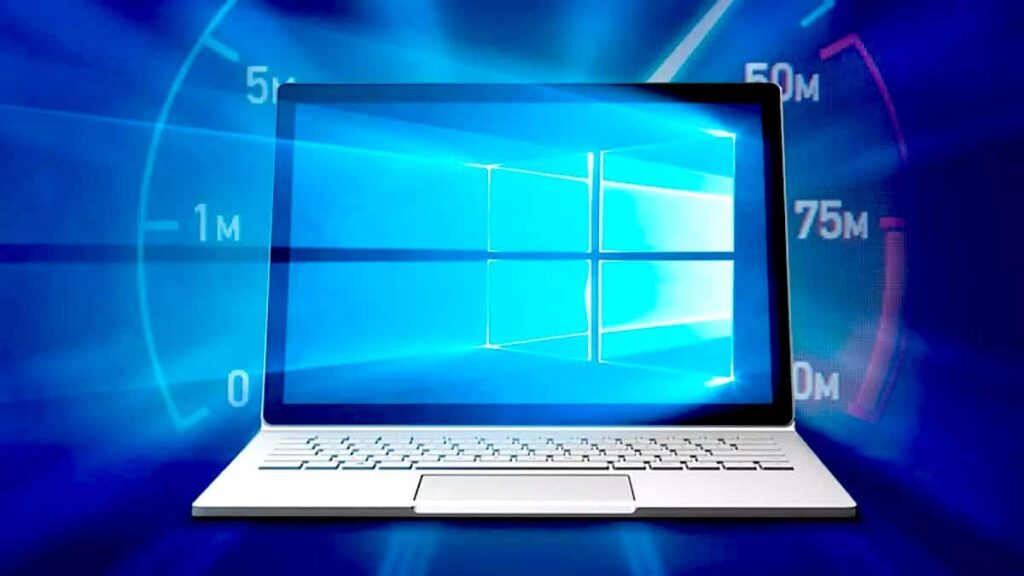7 tips to make Windows faster

Over time, you may notice that your computer slows down. This is a natural occurrence, especially with intensive use, and it is normal to wonder how to speed up Windows 10″ start-up.
More and more files are being created on your device, your system is being updated and your hardware may no longer be able to handle it all. In this article you will learn how to speed up all versions of Windows 10 even without updating the settings. Before you get started, here's how to get started with Windows 10.
Why is Windows 10 so slow to boot?
To answer this question, we should first ask ourselves: "What is the average start -up time of Windows 10? The average boot time of a Windows PC is 1 minute. But Windows 10 should boot in seconds if not too many processes are started at boot time. Most Windows PCs boot in 30 seconds.
So anything longer than one minute, e.g. 3.5 minutes, would be too slow and would contribute to a slow boot-up of the PC. However, many users continue to report slow boot issues in Windows 10. According to users, this problem is caused by a number of signs, including:
- A corrupted Windows Update file.
- Too many start-up programmes and applications
- Outdated Windows operating system
- Using an older hard disk instead of a newer, lighter and faster one
- Malware
- Too many programmes running in the background
- Windows updates run during business hours
How to speed up Windows 10
Our tips focus on how you can increase the speed of your system without sacrificing features, looks and services. We have kept the methods below accessible and easy to perform. However, for even better results, we have linked some products in our shop for you.
1. carry out regular reboots
The longer you leave your computer on, the slower it can become. As your hardware is constantly running, your system can slow down because temporary files are created or various components simply overheat.
Although Windows 10 hibernates the screen by default, many users leave their computers on for days or even weeks. During this time, applications continue to run in the background, working overtime in memory and causing severe slowdowns.
To prevent this, next time after you have finished your work, simply switch off the computer.
To do this, click on the Start menu in the taskbar and then on the Power key. Select Shutdown here. After a few minutes, switch the computer on again with the power button.
2. keep your system up to date
It is important to keep your operating system up to date. New updates bring new features, better optimisation and often even security patches.
Update Windows 10
You can update Windows 10 via the Settings app.
3. deactivate unnecessary start-up applications
Every time your system boots up, several applications are launched at start-up. This feature is used by many applications that you want to have ready when you log on to your computer, such as antivirus software.
However, many applications are not necessary for your device to load at start-up.
Some applications, especially free ones, often alter the system and set unnecessary start-up applications. This not only slows down the start-up time, but can also lead to significant performance losses as these applications continue to run in the background.
Learn how to disable unwanted startup apps to improve the speed of your Windows 10 operating system.
Follow the steps below:
1. Open the Task Manager in one of the following ways:
• Right-click anywhere on your taskbar. This opens a context menu. Click on Task Manager here.
• Alternatively, you can press the Ctrl, Alt and Esc keys simultaneously on your keyboard.
2. When the Task Manager is launched in the compact view, click on the More Details option at the bottom left of the window. This will expand the window and show you more info needed to access the start-up applications.
3. Use the menu at the top of the Task Manager window to switch to the Autostart tab. Here you can see all the applications that are started when your computer is started.
4. You can check the Impact at Startup column to see which applications have a big impact on your computer's performance.
• Note: Make sure that the application you want to disable does not have Microsoft Corporation in the Manufacturer column. These applications usually do not affect the performance of your system and may be necessary for Windows 10 to work as intended.
5. Select an app you want to deactivate, then click the Deactivate button at the bottom right of the window. Its status should change to Deactivated.
6. Repeat this procedure for all applications that you do not need at start-up and then restart your computer.
Your computer should boot without heavy or unnecessary applications starting automatically. This allows you to check the boot time and performance of your machine.
4. start the Disk Cleanup utility.
Windows 10 has a built-in tool to help you clean up the files on your computer: the Disk Cleanup Tool.
Disk Cleanup is easy to run and can free up lots of space on your device by deleting files you didn't even know you had and certainly don't need. This way you create more free space on your computer and improve performance.
Learn how to run Disk Cleanup on a Windows 10 device:
1. Use the search box in the taskbar or press the Windows and S keys on your keyboard to open the search function.
2. Enter "Disk Cleanup" and run the tool from the search results.
3. When prompted, select the drive you want to clean up. We recommend that you start with the drive where Windows 10 is installed and then repeat these steps for all other drives.
4. Let the utility scan your device and then select what you want to remove from the system.
5. After you have completed the action, you can also see how much space is released on your drive.
6. Click the OK button to continue and finally delete the files you selected.
It is recommended that you reboot your system after the deletion process is complete.
You can also do this via the advanced system settings.
5. uninstall applications that are not in use
There may be some applications on your computer that you no longer need or did not even know existed.
There can be a number of reasons for this. Some manufacturers ship their computers with pre-installed software, often referred to as bloatware.
Free applications, also called freeware, can successfully install hidden applications on your computer. Many computer users install applications for a specific purpose but never use them again.
The best thing to do is to go into the settings and uninstall applications that you no longer need.
See our article Installing and uninstalling apps in Windows 10 for further instructions.
6. delete the Windows cache
Temporary storage of data in memory (often referred to as caching) is a technique by which computer applications temporarily store data in a computer's main memory (i.e. working memory or RAM) to enable fast retrieval of that data. The main memory used for temporary storage is called a cache.
How can I clear the cache in Windows 10?
You can clear the cache or delete temporary files in the Windows settings as follows:
1. Click on the Start menu (the Windows logo) in the lower left corner of your screen and then on the Settings icon.
2. Then click on System.
3. Click on Memory.
4. Now click on Release Storage Space.
5. Wait until the scanning process is completed.
7: Use the PC optimiser
It may seem that PC optimisers are a thing of the past, but that's not true! PC optimisers have been around for decades and new ones are being developed every day.
These optimisers fix computer errors, remove unnecessary files from your PC, improve and speed up Windows 10 and correct its settings.
These actions speed up the performance of your device and can even fix various errors.
If you want to know the best PC optimisers, you can find them here: The best PC optimisers.
Do you have any questions?
We hope that we have been able to show you how to increase the speed of your Windows 10 device with this guide. If you need further assistance, our customer service team will be happy to help.
Remember that you can always read a little more about Windows 10 on our website or on the manufacturer's website.
Write us a comment or give us a call.
Yours sincerely,
Your Licendi team.




